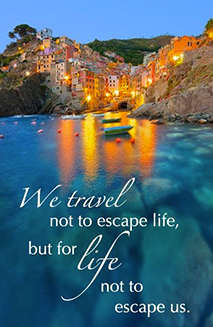- 1800-123-5555
- Travel Agent? Join Us
- Blog
- Offers

Place De La Concorde In Paris
Visit Place de la Concorde, the famous public square in Paris
Rated 3.50/5 ( based on 10 reviews )
Place De La Concorde, Paris (France)
Place de la Concorde is one of the famous public squares in Paris and the largest square in France. Located at the eastern corner of Champs Champs-Élysées in the eighth arrondissement of Paris, Place de la Concorde in Paris has witnessed royal exhibitions in the past especially during the French Revolution. King Louis XVI was executed by Place de la Concorde guillotine, about 8 meters in height, in 1793 during the revolution.
History of Place de la Concorde
Place de la Concorde was designed in 1755 by Ange-Jacques Gabriel in 1755 and was completed in 1772. Earlier, it was named as Louis XV in honor of the then king. There was also an equestrian statue of the king commissioned in 1748 at the Place de la Concorde.
Striking features of Place de la Concorde
Place de la Concorde is a square boasting of some famous architecture at and surrounding it. Its separation by rue Royale makes him one of the best examples of the Louis Quinze style architecture.
From the west to the east and north to the south, Place de la Concorde has famous attractions listed below.
1) West and East edges of Place de la Concorde
While the west end has the famous Champs-Élysées, the east end is bordered by Musée de l'Orangerie and the Galerie Nationale du Jeu de Paume present in the famous Tuileries Gardens.
2) North side of Place de la Concorde
To the north side of Place de la Concorde, there are two identical stone buildings, which are set apart by the Rue Royale. While the western building is Hôtel de Crillon, the eastern one is the building of the French Naval Ministry. The Rue Royale further leads to the Église de la Madeleine. Another important building, located at the intersection of Rue Boissy d'Anglas and Avenue Gabriel is the United States Embassy. Lastly, the western edge of the Rue de Rivoli forms the north-eastern corner of Place de la Concorde.
3) Southside of Place de la Concorde
The south side of Place de la Concorde includes the Palais Bourbon, which houses the French National Assembly and is located on the opposite side of the Seine River. Pont de la Concorde, a bridge constructed over the river by Jean-Rodolphe Perronnet (1930-32) is used to cross the Seine and forms an important part of the South side of the Place de le Concorde.
4) Eight angles of Place de la Concorde
Place de la Concorde is an octagonal square having eight angles, each of which bears a statue, representing a French city. The idea was an initiative of architect Jacques-Ignace Hittorff, who created two of the eight statues namely Rouen and Brest. The other six statues with their sculptures are Marseille and Lyon by Pierre Petitot, Nantes and Bordeaux by Louis-Denis Caillouette & Strasbourg and Lille by James Pradier respectively.
5) Luxor Obelisk at Place de la Concorde
Standing at the centre of the Place de la Concorde is a 23 metres (75 feet) tall Luxor Obelisk that was originally boasting of the reign of pharaoh Ramesses II. Classified as a historical monument in 1936, it is one of two obelisks given by the Egyptian government to France. The second was returned back to the Egyptians in 1990 by President François Mitterrand.
6) Fountains of Place de la Concorde
Place de la Concorde boasts off two famous fountains, which are a symbol of fountains in Paris. They were designed by Jacques Ignace Hittorff. Their alignment is influenced by the Roman fountains.
The structures of both fountains are the same. Each fountain has a stone basin, surrounded by six figures of titrons that are holding fish spouting water. Besides, there are six seated allegorical figures that are supporting the pedestal, of the circular Vasquez. The upper Vasquez is supported by four distinct statues that shoot water upwards and then cascade it first to the lower Vasquez and then to the basin.
While the north fountain is dedicated to the rivers, the south is devoted to the seas with allegorical figures representing Rhone and Rhine on the former and Mediterranean and Atlantic on the latter.
Popular Packages
Unlimited Choices. Trusted Agents. Best Prices. Happy Memories.
Cities:
- Paris
Starting from:
₹25,200/-
₹27,391/-8% OffCities:
- Paris
Starting from:
₹29,600/-
₹32,889/-10% OffCities:
- Paris
Starting from:
₹33,290/-
₹36,989/-10% OffCities:
- Paris
Starting from:
₹39,900/-
₹43,846/-9% OffCities:
- Paris
Starting from:
₹41,999/-
₹46,153/-9% OffCities:
- Paris
Starting from:
₹42,900/-
₹47,667/-10% OffCities:
- Paris
- Amsterdam
Starting from:
₹54,600/-
₹60,000/-9% OffCities:
- Paris
Starting from:
₹63,000/-
₹67,021/-6% OffCities:
- Paris
- Amsterdam
- Brussels
Starting from:
₹64,166/-
₹71,295/-10% OffCities:
- Paris
- Amsterdam
- Brussels
Starting from:
₹64,166/-
₹71,295/-10% OffCities:
- Paris
Starting from:
₹73,500/-
₹80,769/-9% OffCities:
- Paris
Starting from:
₹73,500/-
₹80,769/-9% OffCities:
- Rome
- Florence
- Paris
Starting from:
₹73,936/-
₹80,097/-8% OffCities:
- Paris
- Brussels
- Amsterdam
Starting from:
₹74,399/-
₹84,544/-12% OffCities:
- Limburgerhof
- Engelberg
- Geneva
- Paris
Starting from:
₹74,523/-
₹84,685/-12% OffCities:
- Paris
- Barcelona
- Madrid
Starting from:
₹75,831/-
₹84,257/-10% OffCities:
- Paris
- Barcelona
- Madrid
Starting from:
₹77,556/-
₹88,132/-12% OffCities:
- Rome
- Venice
- Paris
Starting from:
₹77,936/-
₹85,644/-9% OffCities:
- Paris
Starting from:
₹78,750/-
₹86,538/-9% OffCities:
- Paris
Starting from:
₹78,750/-
₹86,538/-9% OffPlaces To Visit In Paris
Let the experts guide you to the best of this mesmerizing destination
View AllPont Alexandre III in Paris
The Pont Alexandre III in Paris is considered as the most extravagant, grandiose, ornate bridge in Paris, built over the Seine River. It is not only one of the famous tourist attractions in Paris but also one of the most charming river-crossing bridges in the world. Also classified as a French Monument Historique, the flamb...
- Sightseeing
- Culture
Sacre-Coeur in Paris
Sacre Coeur in Paris is a famous landmark, situated at the pinnacle of the famous butte Montmartre, which is the highest point after the Eiffel Tower in Paris. It is a mini Roman Catholic Church also famous by names like Sacre Coeur Basilica or the Basilica of the Sacred Heart of Paris. It is dedicated to both the sacred he...
- Sightseeing
- Churches
- Historical Sites
Saint-Chapelle in Paris
The Sainte Chapelle is a royal holy chapel in the Gothic Rayonnant style located in the heart of Paris on theÎle de laCité, within the medieval Palais de la Cité, which was the residence of the Kings of France until the 14th century. Today, the Sainte Chapelle in Paris is a popular venue for classical music events featuring...
- Sightseeing
- Historical Sites
Montmartre in Paris
The Montmartre is a large hill located in Paris, in the 18th arrondissement. People think of it as a unique, quaint little village, located right within the city limits. Montmartre Hill in Paris is a great place to get some beautiful vantage views points of the entire city. It is bordered by the rue Caulaincourt and rue Cus...
- Sightseeing
- Historical Sites
Palais Garnier in Paris
Also referred to as the Paris Opera as well as the Salle des Capucines, the Palais Garnier opera house that can seat 1,979 people at one go. Famed to be one of the most popular opera houses of the world, the Palais Garnier in Paris is a popular tourist attraction even for those who do not like operatic music. The entire str...
- Sightseeing
- Music Concert
Things To Do In Paris
Your list of the best things to do, compiled on the basis of actual traveler experiences
View AllWalk Across the Covered Passages of Paris
In the 19th and 18th century, Paris in the areas which are around Grands Boulevards were built with glass roofed shopping galleries which are known as the covered passages of Paris. They are the forerunners to the concept of malls today which provided a shopping experience in the shelter from rain. Dine, shop and also spend...
- Sightseeing
- Historical Sites
Shopping in the Flea Markets of Paris
Shopping at the flea markets in Paris can be fun and exciting as one can get so many voguish products at affordable prices. Being the fashion capital of the world, the designer boutiques, branded shops, and malls are equipped with trendy and fashionable items. However, not everyone can afford to buy these high-end designer ...
- Sightseeing
- Shopping
Boating in Paris
Boating in Paris is the romantic way of touring the city and it is one such activity that one must get engaged in when visiting the city. When one floats along the Seine River, beautiful monuments can be viewed like Eiffel tower. There are many companies that provide boating services for travelers to enjoy the beauty of the...
- Adventure
- Sightseeing
- Nature
Shopping in Paris
Shopping is one of the most exciting activities to keep visitors engaged in the streets of Paris, and it is the best way to imbibe the taste of the Parisian culture. There are so many places for shopping in Paris where tourists can buy a range of things of their choice. Some of the best things to buy from Paris are beret, m...
- Adventure
- Sightseeing
- Shopping
Take a Stroll in the Royal Gardens in Paris
The Royal gardens and the long arcades of Palais Royal are a great place one can choose to stroll through. This place has witnessed the important moments of French history. It was built by Cardinal Richelieu along with the lavish palace. It was given to the Duke Louis Philippe dOrleans by the end of 18th century.
The Roya...
- Sightseeing
- Nature
Our experts would love to create a package just for you!
Fill in your requirements here >
Fastest Growing Holiday Marketplace
650+
Verified Agents
22 Lac+
Happy Travellers
65+
Destinations
Easy, Secure & Reliable
Traveltriangle
Verified
Stringent
Quality Control
24/7
Support
Popular Kerala Holiday Packages
Kerala Holiday Packages From Metro Cities
Popular 1 Night & Above Kerala Holiday Packages
Popular 6 Nights & Above Kerala Holiday Packages
Top Tour Packages In India
Top International Tour Packages
Tour Packages By Theme And Activity
Top Honeymoon Destinations In India
Top International Honeymoon Destinations
Top Destinations In India
Top International Destinations
Want best packages handpicked just for you?
Fill the form and get a callback from our holiday experts
Frequently Asked Questions
Get your answers — before you plan your trip.
FAQs of Paris
What is the Place de la Concorde?
It is a huge public square in Paris and is a major tourist hub.
Are tickets required for entering the Place de la Concorde?
Tickets are not required for visiting this place.
Where is the Place de la Concorde located?
It is located at the end of the Champs-Elysées in Paris.
What is the Place de la Concorde famous for?
Place de la Concorde is famous for its two monumental fountains which are Fontaine des Mers and Fontaine des Fleuves, a 3300 years old Luxor Obelisk and various prestigious hotels surrounding it.
What was the former name of La Place De la Concorde in Paris?
The former name of La Place De la Concorde in Paris was Place Louis XV.
How It Works
Personalise This Package
Make changes as per your travel plan & submit the request.
Get Multiple Quotes
Connect with top 3 agents, compare quotes & customize further.
Book The Best Deal
Pay in easy installments & get ready to enjoy your holiday.














